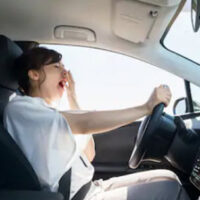Proving Liability in a Drowsy Driving Accident Case

Drowsy driving is a massive problem in the United States of America. According to the NHTSA, in 2022 alone, 693 people died in drowsy driving-related accidents in the U.S. When a drowsy driving accident does not result in death, high chances are it will result in severe injuries. After a drowsy driving accident, the victim can file a legal claim and seek compensation from the drowsy driver. However, proving liability in a drowsy driving accident case can be challenging. That said, it is possible to prove liability in a drowsy driving accident case. Below is a look at how you can establish liability in a drowsy driving accident case.
Understanding Drowsy Driving and Its Dangers
Before discussing how to prove liability in a drowsy driving accident, it is crucial to first understand the meaning of drowsy driving and the dangers of this behavior. Drowsy driving occurs when a driver operates their vehicle while fatigued or sleep-deprived. There are various reasons why a driver might become drowsy, including lack of enough sleep, certain medications, untreated sleep disorders, working long shifts, and driving for long periods without breaks.
Drowsy driving can affect a driver’s concentration, decision-making abilities, reaction time, and overall coordination. A drowsy driver may not react in time to avoid an accident or other dangerous situations on the road. According to research, drowsy driving can be just as dangerous as drunk driving. Research suggests that after being awake for 18 hours, the effects on vigilance, reaction time, coordination, and multitasking are comparable to having a BAC (Blood Alcohol Concentration) of 0.05%. After being awake for 24 hours, impairment can be compared to a BAC of 0.1%.
Proving Liability in a Drowsy Driving Accident Case
In a drowsy driving accident case, the burden of proof is on the plaintiff. This means it is up to you to prove that the defendant was negligent and their negligence caused your accident and resulting injuries. Proving liability in a drowsy driving accident case can be challenging. However, with the right evidence, you can establish liability and recover the compensation you deserve for your injuries and damages. The following are some types of evidence that can help establish liability in a drowsy driving accident case;
- Police Report: The police report may contain statements from witnesses who saw the driver, for example, veering in and out of their lane. This behavior could suggest drowsy driving.
- Surveillance Footage: Traffic cameras, dash cams, or CCTV cameras may have captured the moments leading up to the accident, providing evidence of the driver nodding off or falling asleep behind the wheel or driving erratically.
- Photos of the Accident Scene: Photos can reveal critical details such as lack of skid marks, which could indicate the driver did not hit the brakes.
- Medical Records: These could show a driver’s health condition or need for prescription drugs that induce drowsiness.
- Social Media Posts: These can show the driver’s activities before the time of the accident.
- Expert Testimony: For example, an accident reconstruction specialist or sleep researcher can provide valuable insights into how drowsiness may have caused the accident.
- Driver’s History: A history of drowsy driving or being cited for similar offenses can be used to establish a pattern of negligence.
Contact a Lakeland, FL, Car Accident Attorney
For legal help, contact the skilled Lakeland car accident attorneys at Darla K. Snead, P.L.
Source:
nhtsa.gov/risky-driving/drowsy-driving
